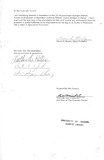| dc.description.abstract | Economic analysis is an important prerequisite ill the development of new technologies
before they are transferred to farmers for adoption. In Africa, new technologies are being
developed-for the control of East Coast Fever (ECF). However, economic analysis for the ECF control methods have been limited to economic estimates using budgeting techniques that do not adequately account for production and price risks associated with the technology.
ECF is a cattle disease caused by the protozoan parasite Theileria parva and
transmitted by ticks. ECF is conventionally controlled by controlling ticks using acaricides and by treating the sick animals. A new technology involving immunizing cattle against the disease has been developed, tested and found to be feasible under research conditions. However, controlling ECF disease alone using the new technology may not be adequate because the presence of ticks also causes stress on cattle and can transmit other diseases. This study focused on the evaluation and prediction of farm-level financial and economic impacts of using alternative ECF control methods.
A whole farm simulation model, the Technology Impact Evaluation Simulator (TIES),
was used to evaluate five alternative ECF control methods. The model included all the
production and disposal activities on the farm as well as off-farm activities. Production and
price risks were estimated within the model using multivariate probability distributions for yields and prices. The study used both primary and secondary data. A total of 12 farms in Uasin Gishu District and Kaloleni Division in Kenya were analyzed.
The TIES model was used to simulate annual production, marketing, financial
management, and family consumption activities of representative farms over a to-year planning horizon. The key output variables from the simulation model were net present value, net worth, benefit cost ratio, internal rate of return, and average annual cash and net farm income. The simulated output results from the alternative ECF control methods were used to analyze the financial and economic performance of farms, the probability of survival, and the probability of economic success of the farms. The alternative ECF control methods on farms were also evaluated using the stochastic dominance criterion to determine the most preferred alternative by farmers and to estimate the associated confidence premiums.
The results from the analysis indicated that the improved alternative ECF control
methods were financially and economically superior than the currently practiced methods on all farms. The most preferred alternative ECF control method was the adoption of the new technology, immunization or the "Infection and Treatment Method" with a 75-percent reduction in acaricide use. The highest financial and economic benefits were realized with exotic cattle breeds and crosses between the exotic breeds and the indigenous Zebu cattle (Grade cattle).
The most preferred ECF control method was stable over a wide range of cattle mortality rates, immunization and acaricide cost levels. However, the method was sensitive to changes in cattle productivity, particularly milk production.
The results demonstrated that whole farm simulation, based on a model such as TIES,
offers a flexible method for economic analysis of new technologies on farms. Risks associated with stochastic yields and prices are easily incorporated in the model using probability distributions. With stochastic simulation, probabilities associated with net present value, internal rate of return, benefit cost ratio and other key output variables are generated that can be used to select among alternative technologies. The generated probabilities indicate the chance that the new technology or investment will attain the required selection criteria as opposed to the traditional selection criteria which rely on absolute values only. Thus, with this particular model, the economic survival and success of farms from the use of alternative technologies can be assessed. The probability distributions for the output variables also allow for the alternative technologies to be ranked using the stochastic dominance criteria and to estimate the confidence premiums or convictions associated with the most preferred technology or investment alternative. The calculated confidence premiums indicate the shadow prices that might be attached to alternative technologies or practices. | en |

